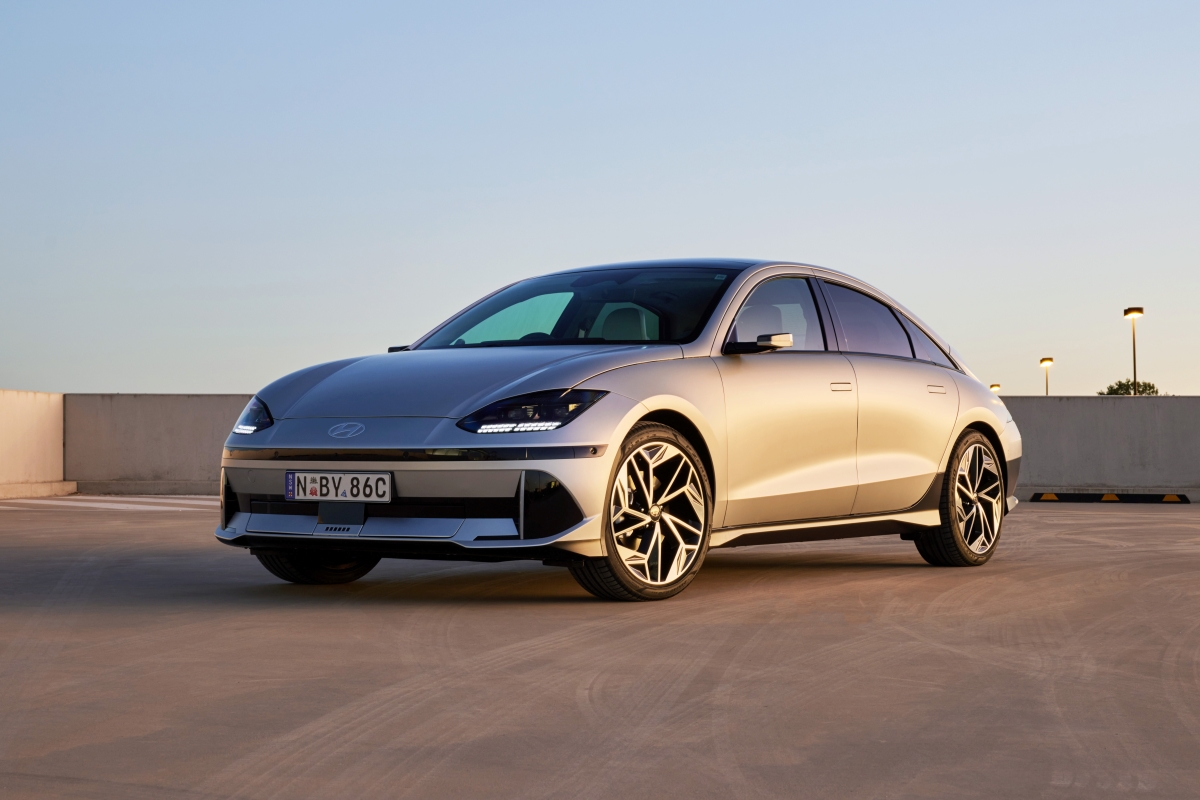
What is it?
Hyundai’s answer to the wildly-popular Tesla Model 3. The company likes to call the Ioniq 6 an ‘electrified streamliner’, which is a grandiose way of saying that this is a car shaped by the wind tunnel for maximum efficiency.
While it lacks the purity of design seen in the Prophecy concept that previewed it, the Ioniq 6 is nevertheless a very slippery car (with a 0.217 drag coefficient) that allows it to have a range of up to 614km. That’s an impressive distance or an electric car, which should help quell some of the range anxiety that still exists in Australia.
Does it have any racing pedigree?
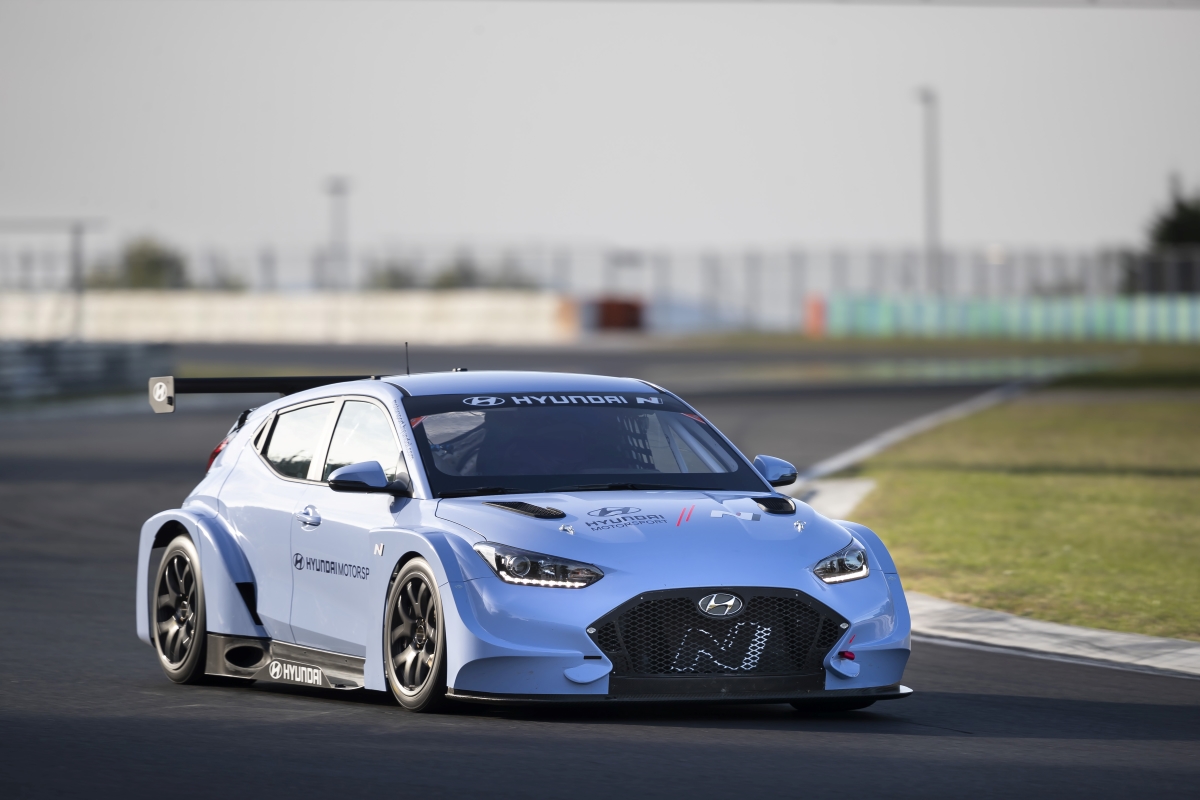
Not yet, but it will soon. Hyundai is set to use the Ioniq 6 as the basis for its eTouring Car World Cup entry in 2023. The company has been competing in the series since the beginning, using a Veloster-shaped car, but switching to the aerodynamically-honed Ioniq 6 should not only give it a competitive advantage but also a strong marketing connection between the road and race.
Hyundai sees a big future for electric racing and wants to get eTouring Cars into the hands of private race teams in the near-future. It’s also planning a one-make racing series using the upcoming Ioniq 5 N electric performance car.
What’s under the bonnet?
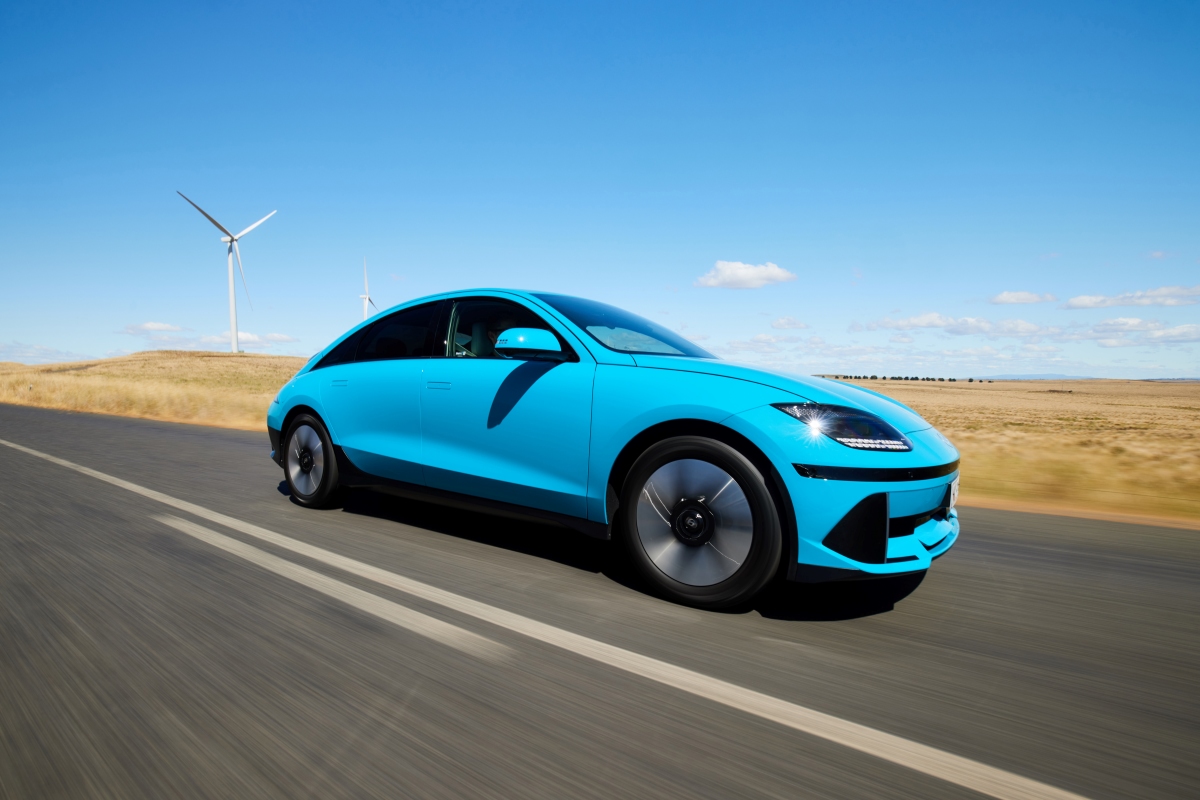
There are two powertrain options for the Ioniq 6 at launch – a single-motor, rear-wheel drive and a dual-motor, all-wheel drive set-up.
The former is the one with the impressive 614km range, and makes 168kW of power and 350Nm of torque from its rear-mounted electric motor. The second option adds another motor to the front-axle and boosts performance to 239kW/605Nm, but the range drops to 519km – which is still a very impressive distance.
The single-motor option is perfectly fine for everyday use. It performs briskly around town, with the easy acceleration that we’ve come to know and love from electric cars. But if you want a sportier drive then the dual-motor variants provide that, with the extra power and torque resulting in a noticeably quicker machine. The 0-100km/h claimed time is 5.1 seconds, which isn’t particularly quick for an EV, but it’s genuinely quick for what is ultimately a very spacious four-door sedan.
How does it handle?
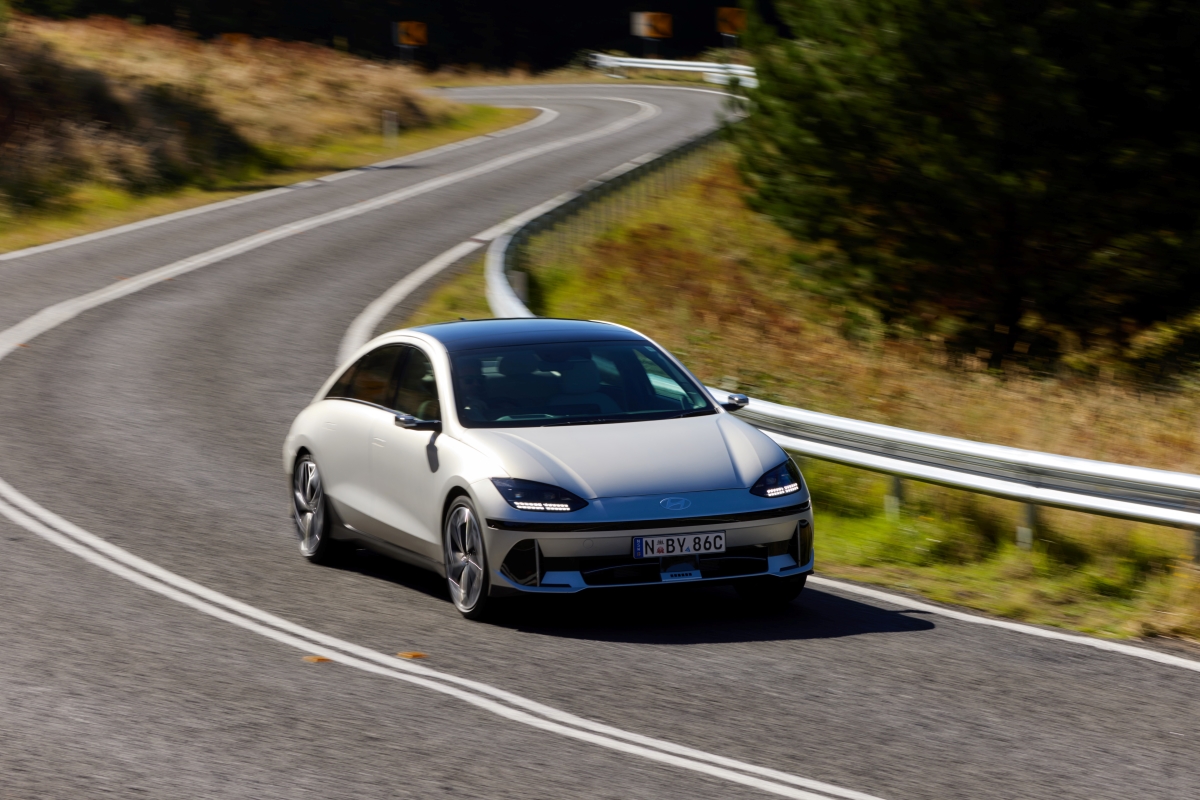
Hyundai launched the Ioniq 6 on the challenging roads outside of Albury, which demonstrated their confidence in the abilities of the car to handle the twists and sweeps that are the trademark of this region.
It’s a pleasant car to drive around town, with easy acceleration, a comfortable low-speed ride and responsive steering. However, on the open road it doesn’t shine as brightly, with some obvious problems rearing their head.
The Ioniq 6 has a very rigid chassis to contend with the weight of the car and its sizeable batteries, but this means the damping struggles to both control the chassis while also offering compliance. The result is a busy ride on Australia’s country road, with the car tending to shake and bump with regularity.
Dynamically the Ioniq 6 is a nice family sedan, but on the twistiest, most challenging roads the steering lacks sharpness and feels unnaturally weighted, which does detract from the driving experience slightly.
But that’s not really the key appeal of the Ioniq 6…
Where would you most like to drive it?
The biggest plus for the Ioniq 6 is the range, with the single-motor model capable of more than 600km of driving, under the right conditions. This means, even if you don’t hit those numbers precisely it’s still capable of taking you far from home and back again.
What’s the interior like?
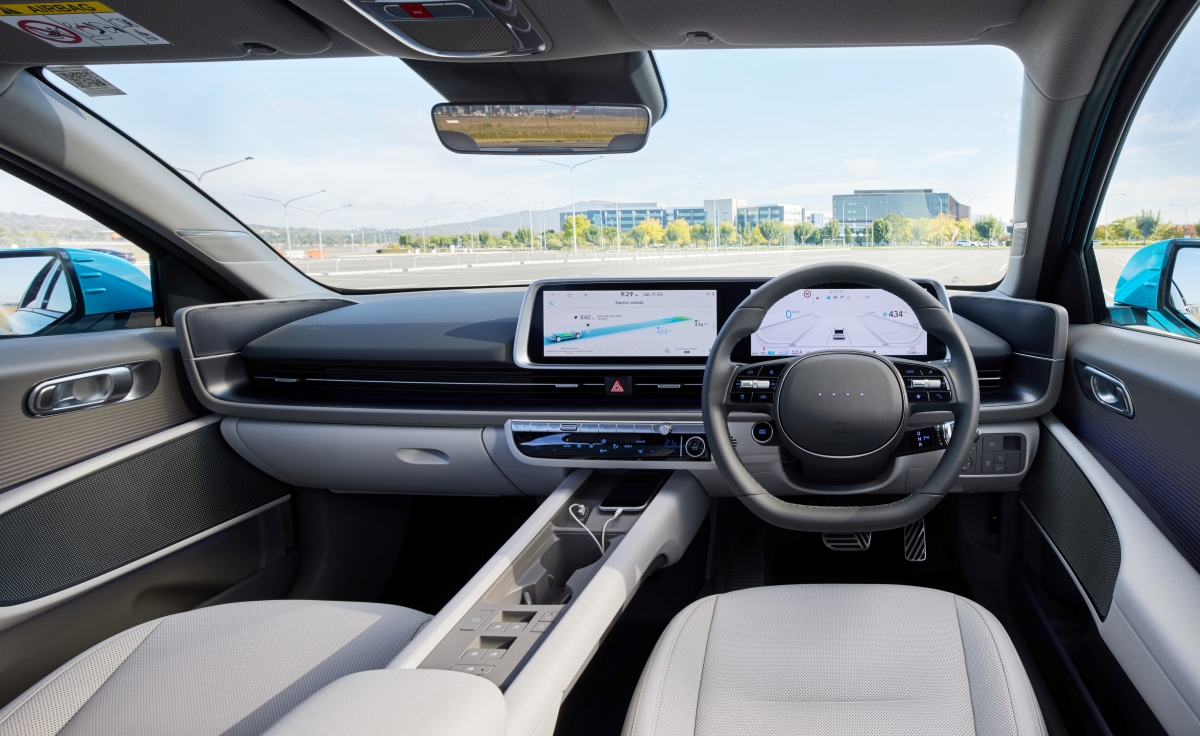
Very, very modern. Hyundai has really indulged in the kind of ‘surprise and delight’ features that EV owners seemingly demand these days. That means dual-colour ambient lightning, ‘Speed sync’ lighting which intensifies the ambient lighting when you’re accelerating and ‘Relaxation front seats’ that allow you to recline and wind down as you recharge.
Of course, some of the headline-grabbing features, such as the are only available on higher-grade models, but even in the entry-grade model the Ioniq 6 feels suitably hi-tech.
The other notable feature of the Ioniq 6 is the space, there’s generous room up front with specially-designed narrow doors and a handy central panel with extra storage. The rear has excellent legroom but thanks to the curved roofline it does cut into headroom for anyone over 180cm.
How much does the Hyundai Ioniq 6 cost?
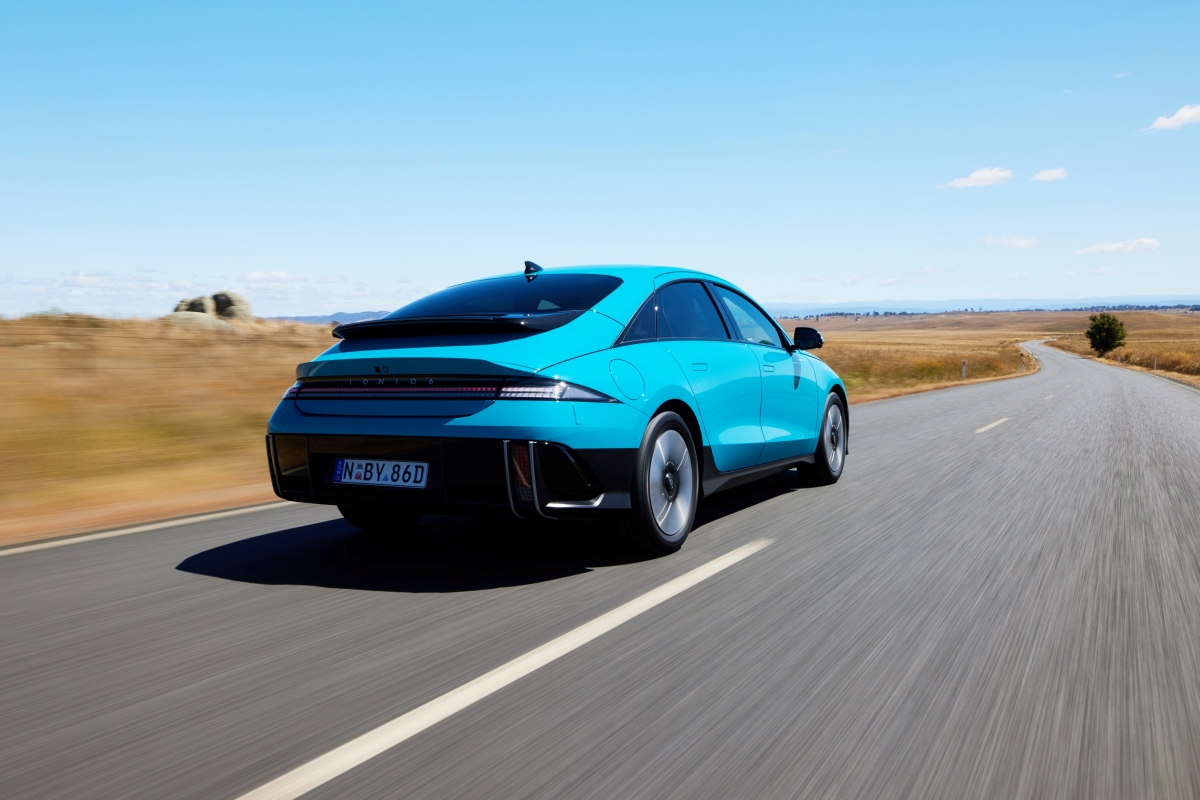
Hyundai Australia is starting with three options for the Ioniq 6 – Dynamiq, Techniq and Epiq.
The rear-wheel drive Dynamiq starts at $74,000, which is nearly $10,000 more expensive than the equivalent Tesla Model 3, so Hyundai will need to work hard to convince buyers to make the switch. But Hyundai has opted to go for a high-level of standard equipment across the range, with the Dynamiq featuring the SmartSense safety suite, Over the Air updates, a five-year subscription to Hyundai’s BlueLink connected services, leather interior and vehicle-to-load capabilities.
The even better-equipped, dual-motor Techniq and Epiq models are priced from $83,500 and $88,000 respectively, which are also more expensive than their Tesla rivals but gain 20-inch alloy wheels, a sunroof, Relaxation front seats and other enhancements for the powertrain.
Like the Ioniq 5 before it, with very limited supply (potentially just 1000 cars in 2023), Hyundai is selling the Ioniq 6 directly to customers via its own website, rather than through its dealers.
Would I buy one?
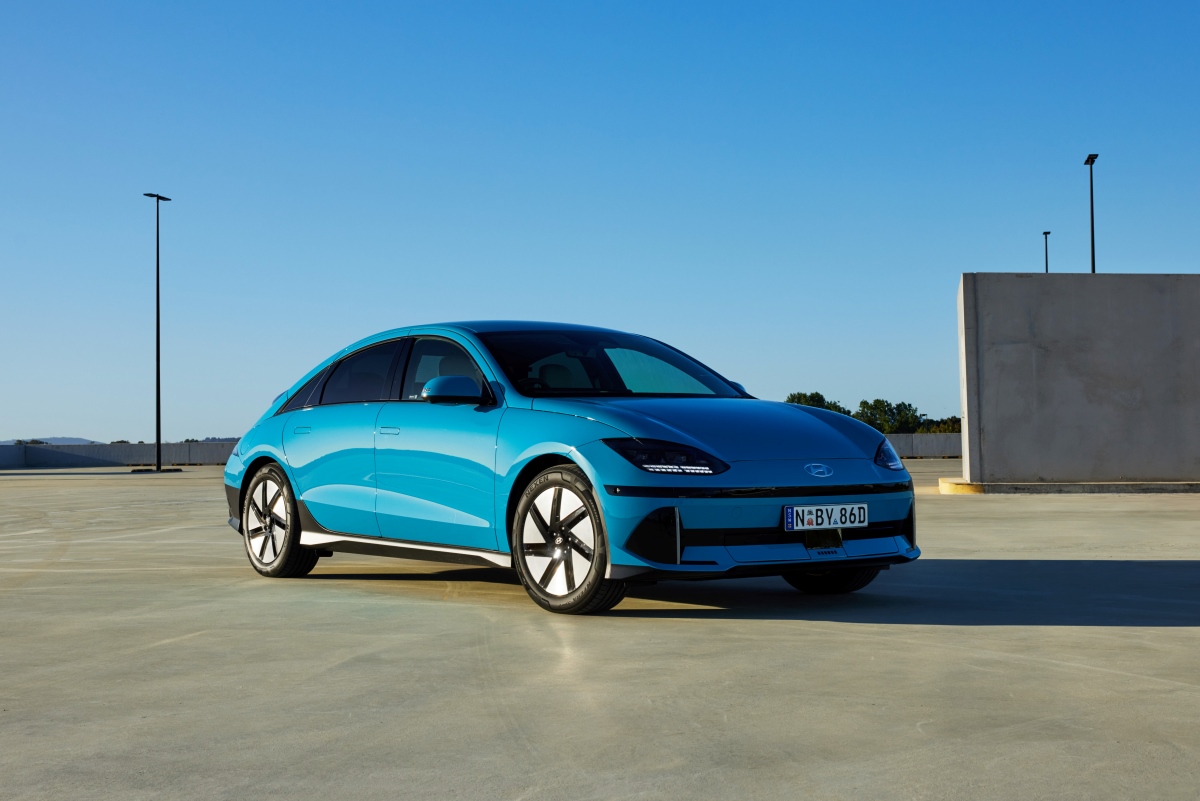
While the Ioniq 6 isn’t quite the Tesla Model 3 rival it hopes it will be, based on its price and limited availability, there’s still a lot to like about it. Its long range, brisk performance and pleasant on-road manners make it an appealing proposition for those looking to either make the switch to an EV for the first time or upgrade their existing one with lesser attributes.












Discussion about this post